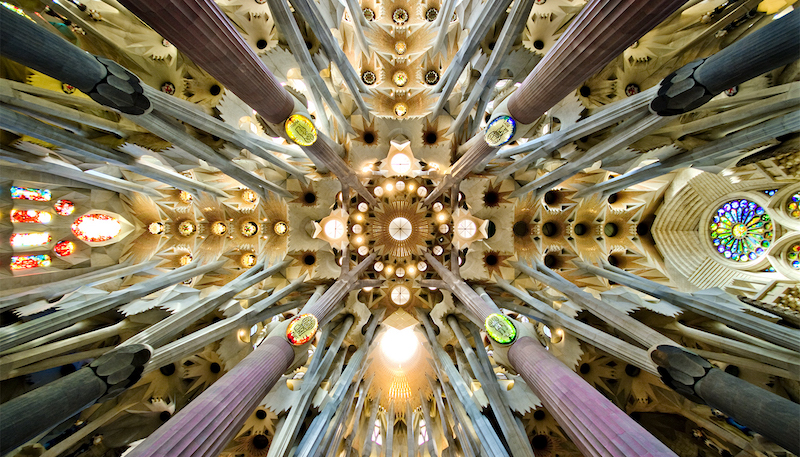It is said that travel broadens the mind, and beginning in 2017 the American Institute of Architects (AIA) is offering a new global travel program specifically focused on broadening the architectural mind.
Architectural Adventures, as the program has been dubbed, will offer small-group trips tailored for the discovery and appreciation of architecture. Every Architectural Adventures tour will feature subject-matter experts, hand-picked by the AIA, to guide travelers and enliven their awareness of the world’s architecture. The tour guides will offer an up-close view of not just the iconic landmarks and buildings in the various cities, but also an explanation of how the historical, political and cultural events helped shape the cityscapes.
Architectural Adventures provides individuals with the opportunity to participate in special excursions, gain exclusive behind-the-scenes access, and get insider knowledge to popular sights as well as lesser-known, yet equally fascinating architecture.
2017 destinations and highlights are listed below:
- Havana: In March, set forth on a six-day immersion in the Cuban capital that spans from Old Havana and the 16th century stone fort that guards Havana Bay to the city’s early twentieth-century Art Deco wonders and its most prominent contemporary projects.
- Barcelona: In March, discover Antoni Gaudí’s Modernist marvels and see the city’s medieval Gothic Quarter.
- Chicago: In April, explore the varied works of Frank Lloyd Wright and see why Chicago is known as the first city of American architecture.
- Lisbon to London: In April, cruise Europe’s Atlantic coast, stopping to see its most spectacular sites and structures, like the Frank Gehry-designed Guggenheim Museum in Bilbao, Spain and France’s Mont Saint-Michel.
- Northern Italy: In May, immerse yourself in the Renaissance world of Andrea Palladio and visit Venice for an exclusive tour of St. Mark’s Basilica.
- Cities of the Baltic Sea: In June, sail from Copenhagen to Gdansk to Tallinn to St. Petersburg to Helsinki to Stockholm, stopping to see the Baltic’s grandest designs.
- Along the Danube: In June, experience Central Europe’s signature cities, including Prague, Vienna, Bratislava, and Budapest.
- London: In July, wander London’s charming back streets and towering triumphs like Westminster Abbey and St. Paul’s Cathedral.
- Portugal and Northern Spain: In October, take an epic 17-day journey from Lisbon to Barcelona by way of the seminal cities of the Spanish Pyrenees.
- China: In October, spend two weeks exploring Chinese culture and design in Beijing, Pingyao, Hangzhou, and Shanghai.
Accommodations, most meals, tour transportation, and logistical details of the trip are included in the tours. For more details on booking availabilities and new trip announcements visit architecturaladventures.org.
Related Stories
| Dec 29, 2014
From Ag waste to organic brick: Corn stalks reused to make construction materials [BD+C's 2014 Great Solutions Report]
Ecovative Design applies its cradle-to-cradle process to produce 10,000 organic bricks used to build a three-tower structure in Long Island City, N.Y. The demonstration project was named a 2014 Great Solution by the editors of Building Design+Construction.
| Dec 29, 2014
14 great solutions for the commercial construction market
Ideas are cheap. Solutions are what count. The latest installment in BD+C's Great Solutions series presents 14 ways AEC professionals, entrepreneurs, and other clever folk have overcome what seemed to be insoluble problems—from how to make bricks out of agricultural waste, to a new way to keep hospitals running clean during construction.
| Dec 29, 2014
HealthSpot station merges personalized healthcare with videoconferencing [BD+C's 2014 Great Solutions Report]
The HealthSpot station is an 8x5-foot, ADA-compliant mobile kiosk that lets patients access a network of board-certified physicians through interactive videoconferencing and medical devices. It was named a 2014 Great Solution by the editors of Building Design+Construction.
| Dec 28, 2014
Robots, drones, and printed buildings: The promise of automated construction
Building Teams across the globe are employing advanced robotics to simplify what is inherently a complex, messy process—construction.
BIM and Information Technology | Dec 28, 2014
The Big Data revolution: How data-driven design is transforming project planning
There are literally hundreds of applications for deep analytics in planning and design projects, not to mention the many benefits for construction teams, building owners, and facility managers. We profile some early successful applications.
| Dec 28, 2014
AIA course: Enhancing interior comfort while improving overall building efficacy
Providing more comfortable conditions to building occupants has become a top priority in today’s interior designs. This course is worth 1.0 AIA LU/HSW.
| Dec 28, 2014
6 trends steering today's college residence halls
University students want more in a residence hall than just a place to sleep. They want a space that reflects their style of living and learning.
| Dec 28, 2014
Using energy modeling to increase project value [AIA course]
This course, worth 1.0 AIA LU/HSW, explores how to increase project value through energy modeling, as well as how to conduct quick payback and net present value studies to identify which energy strategies are most viable for the project.
| Dec 28, 2014
The lowdown on LODs: Bringing clarity to BIM
These days, BIM is par for the course across most facets of design. But a lot of the conversation surrounding BIM still lacks clarity due to ambiguous terminology, a lack of clear-cut guiding illustrations, and widely varying implementation, writes GS&P's John Scannell.
| Dec 28, 2014
The future of airport terminal design: destination status, five-star amenities, stress-free travel
Taking a cue from the hospitality industry, airport executives are seeking to make their facilities feel more like destinations, writes HOK's Richard Gammon.

















